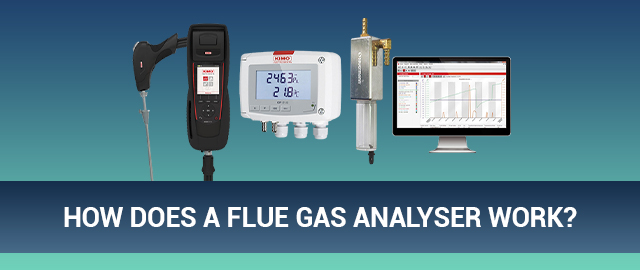The phrase "flue gas" describes the gas emissions created during the combustion process and expelled through the chimney or flue of a building.
Flue gas
analysis used to take a lot of time and money. However, technological
improvements have made flue gas analysis more affordable and simple than ever
before.
We will learn
about the operation of a flue gas analyzer in this blog.
A portable electronic instrument called a flue gas analyzer tracks and shows the
combustion by-products from both residential and commercial fossil fuel-powered
appliances. They might also gauge the standard of the air in specific areas of
a structure.
A household
or business service engineer who is in charge of installation, management, and
maintenance should always employ a flue gas analyzer.
What's the process of a flue gas
analyzer?
The emissions
of home appliances are tested and tracked using a flue gas analyzer. It does so
by calculating how much hazardous gas the appliances emit. Flue gas typically
has the following components:
·
CO2 (Carbon Dioxide)
·
Nitrogen
·
Sulphur
·
Vaporized water
·
Oxygen
·
Carbon monoxide (CO)
·
Solids (dust, soot) (dust, soot)
·
Several other contaminants
The most
hazardous of these contaminants is carbon monoxide. It is difficult to detect
because it has no colour or smell, and large doses can quickly kill a person. A
flue gas analyzer, among other things, can detect this risk by testing the
appliance or monitoring the surrounding air.
The Right Way to Use a Flue Gas
Analyzer
The probe of
the analyzer should be inserted into the appliance's exhaust to be monitored.
The sensor on the analyzer will be able to pick up gas emissions coming from
the appliance. The results will be displayed on the digital screen, warning you
of both the potential for poisoning and the effectiveness of the equipment.
A similar
approach to computing a flue gas measurement is utilised to monitor ambient
air, but you will instead conduct a combustion analysis in the open air. An
effective measuring tools for making sure that the air in a building is safe
throughout is a flue gas analyzer. Some gases, like carbon monoxide, are
lethal, so detecting a substantial volume of these gases in open air poses a
considerable risk.
What should the flue gas analyzer
readings be?
Depending on
the gas emissions being monitored and the instrument being tested, a flue gas
analyzer's desired readings may vary.
The CO/CO2
ratio, which measures the amount of carbon monoxide in relation to the amount
of carbon dioxide detected in the exit flue, should be less than 0.004 if an
appliance is operating efficiently. Any level beyond that necessitates further
research, and anything more than 0.008 is deemed harmful.
A carbon
monoxide level of fewer than 100 parts per million (ppm) is considered
acceptable, but anything more is potentially harmful. Furthermore, oxygen
levels should not exceed 5% in gas appliances and 8% in oil appliances.

0 Comments
Post a Comment